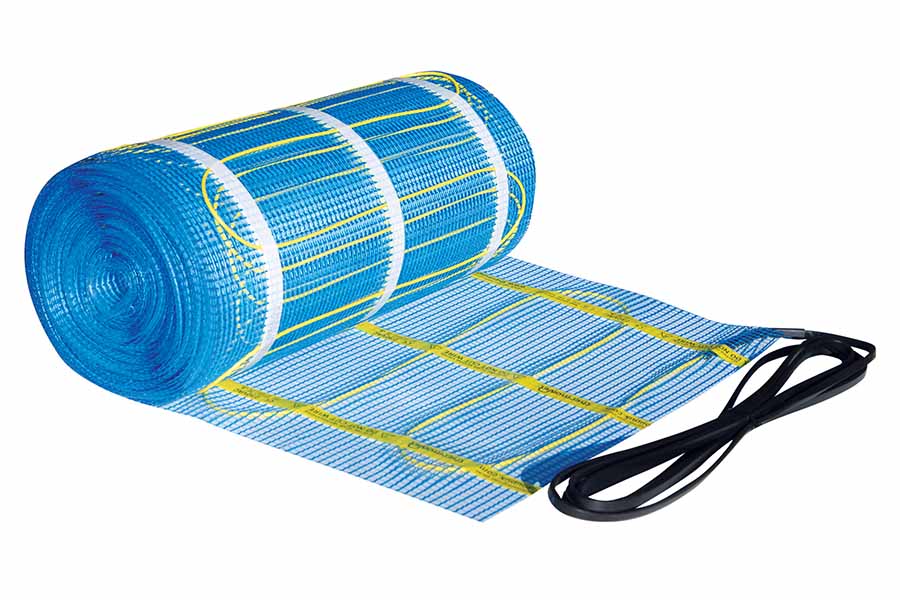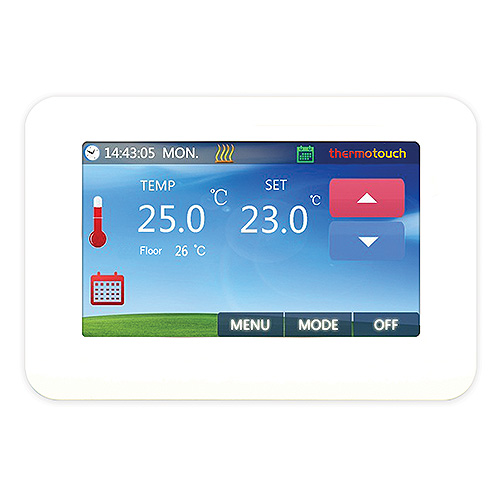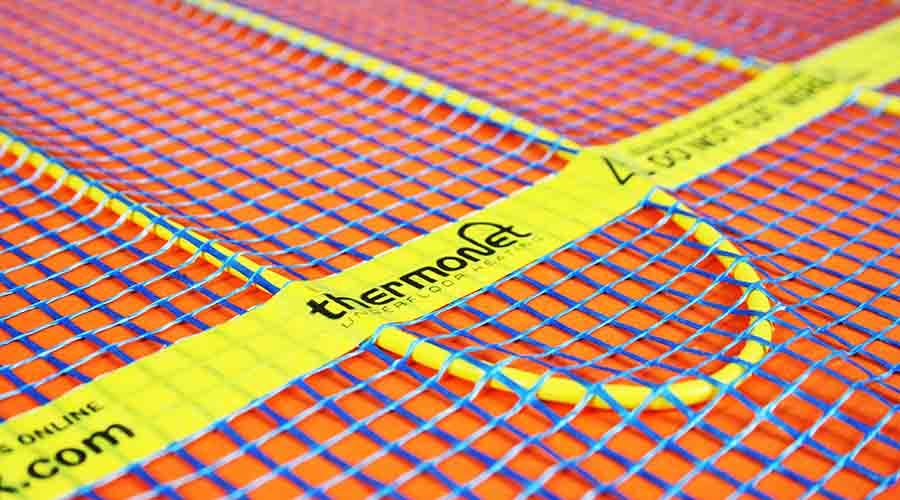Electric Underfloor Heating - Everything You Need To Know!
Electric underfloor heating is becoming an increasingly popular choice – with slow-rising heat warming the room from the floor upwards, it generates a wonderful, even temperature. And with innovative products, like Thermonet’s range of underfloor heating mats, it’s now more accessible than ever.
What is electric underfloor heating?
Electric underfloor heating systems use a series of electric wires, installed beneath or within your floor, to radiate heat. There are different types of systems you can use, depending on the size of the room, how well insulated it is and what kind of flooring you have. Loose wire is flexible to fit into small or awkward places, while underfloor heating mats, like the range we offer from Thermonet, are perfect to cover larger areas.
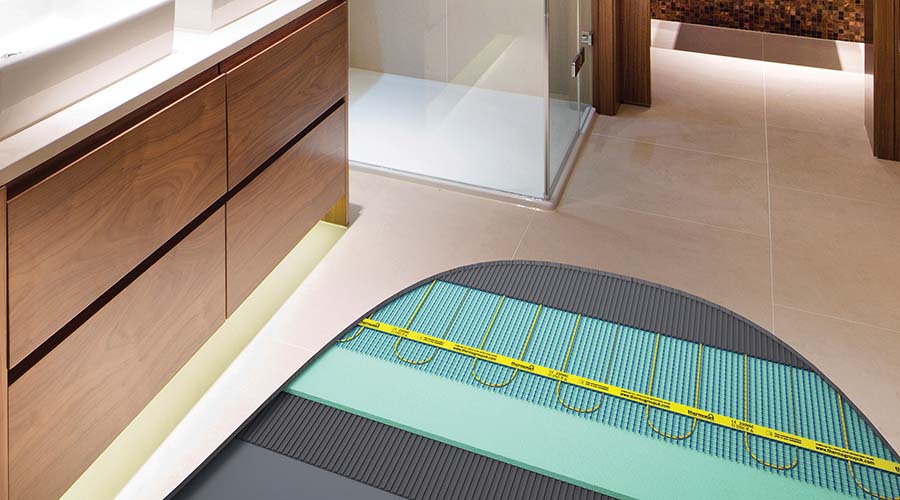
How does electric underfloor heating work?
An ultra-thin heating wire is installed under the floor level of the room and, when the system is on, the wire heats up. This, in turn, heats the floor surface – effectively turning the floor into a large radiator.
While traditional radiators heat the air, which rises and falls as it cools, underfloor heating releases heat slowly at floor level, giving an even distribution.
What are the efficiency benefits of electric underfloor heating?
As heat is released slowly, it is a more even and comfortable distribution of heat than that generated by a radiator, and more efficient as systems can be operated at a lower temperature. In fact, electric underfloor heating installation can reduce heating bills by 15% to 50%, compared to a wet radiator-fed heating system. (Source – The Green Home.)
Advantages of electric underfloor heating and heated floor mats
- No need for unsightly, ineffective wall-hung radiators.
- Perfect for under tile heating, allowing wetroom floors to dry quickly.
- No dust gathering behind radiators and circulating – ideal for asthma and other respiratory issues.
- Provides 70% radiating heat, making a more comfortable environment and warmth for longer after switching off.
- Can be used with almost any flooring, including porcelain, stone, laminate, hardwood, lino and carpet.
Disadvantages of electric underfloor heating
Electric underfloor heating can take longer to heat up than traditional radiators. However, because it is laid on top of the existing floor, it warms up significantly quicker than wet underfloor heating systems – sometimes in as little as five to ten minutes. Larger rooms and open-plan spaces may need additional radiators, however, to maintain a suitable temperature.
Most suitable floor coverings for electric underfloor heating
Stone, ceramic and porcelain tiles have a high thermal mass and conductivity, to deliver radiant heat quickly and retain it well. Thin porcelain tiles are perfect as they heat up twice as fast and maintain their temperature even more effectively.

Laminate and vinyl both work well with electric underfloor heating, as does carpet and underlay, providing the combined tog value is 2.5 or less. Engineered wood flooring is another great choice, as its stability performs efficiently with varying temperatures.
“We always advise you to check the manufacturer’s recommended maximum floor surface temperature, to ensure your floor type is suitable for use with an electric underfloor heating system.”
Thermonet – designers and manufacturers of electric underfloor heating mats.
Electric underfloor heating installation for tiled floors
Complete under tile heating kits can be purchased, containing everything you need for your underfloor heating installation. Thermonet’s range of underfloor heating mats are supplied in rolls, and feature a high-quality fibreglass mesh combined with a high grab self-adhesive backing, for quick and easy installation. Please bear in mind that, while straightforward to install, any electric underfloor heating must be tested by a qualified electrician.
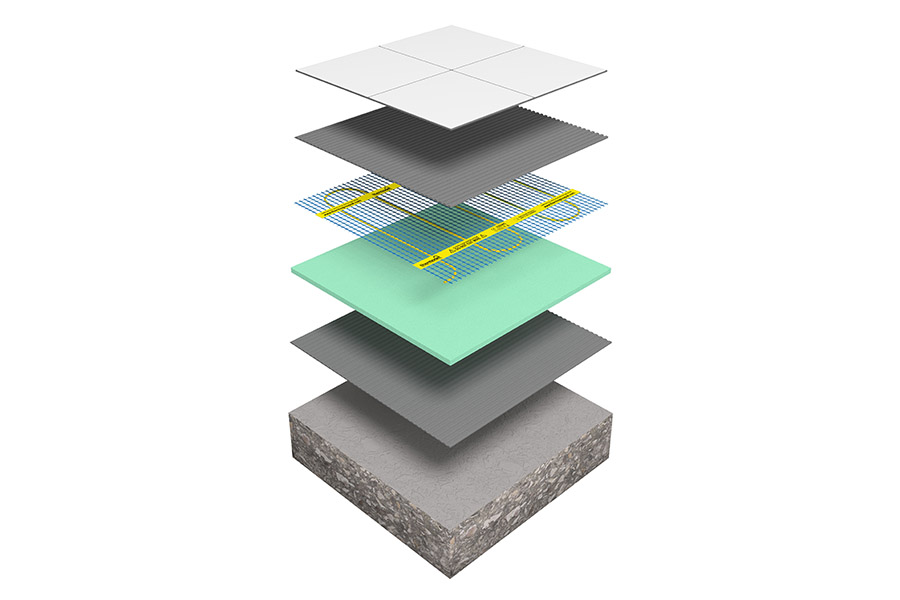
Insulating your floor – To ensure the efficiency of your electric underfloor heating, you need to make sure your floor is adequately insulated. You can buy suitable insulation boards from the manufacturer of your chosen underfloor heating system. Once the floor has been levelled with a screed, lay the insulation boards over the entire area.
Laying underfloor heating mats – Most electric underfloor heating is supplied as a mat with an integrated heating cable. These are easy to install, as they are generally self-adhesive.
Installing the sensor and thermostat – The heat sensor is fitted under the surface of the heating mat, as per the manufacturer’s installation instructions. This is then connected, along with the power cables, to the wall-mounted thermostat.
Tiling over electric underfloor heating mats – Lay adhesive and tiles directly over the heating mat – tiles MUST be laid on a solid bed of adhesive and always use a flexible adhesive that’s suitable for use with electric underfloor heating systems.
What are the likely underfloor heating running costs?
It’s impossible to determine exactly what running underfloor heating will cost, as it’s subject to the efficiency of the system and the choice of floor covering.
- Efficiency – The efficiency of electric underfloor heating depends on the insulation. Correct insulation will stop heat from being absorbed into the slab below, and radiate more heat to the floor above. This means the room heats faster and requires less energy.
- Floor coverings – This can significantly affect the performance of your electric underfloor heating. Ultra-thin porcelain tiles are by far the most efficient, as they allow for quicker heating and use less energy to maintain a comfortable temperature. They will also retain heat for longer than other floor coverings.
For advice on electric underfloor heating, or to find out more about the Thermonet range of underfloor heating mats, please contact us or visit our tile and bathroom showroom in Wareham, Dorset.





